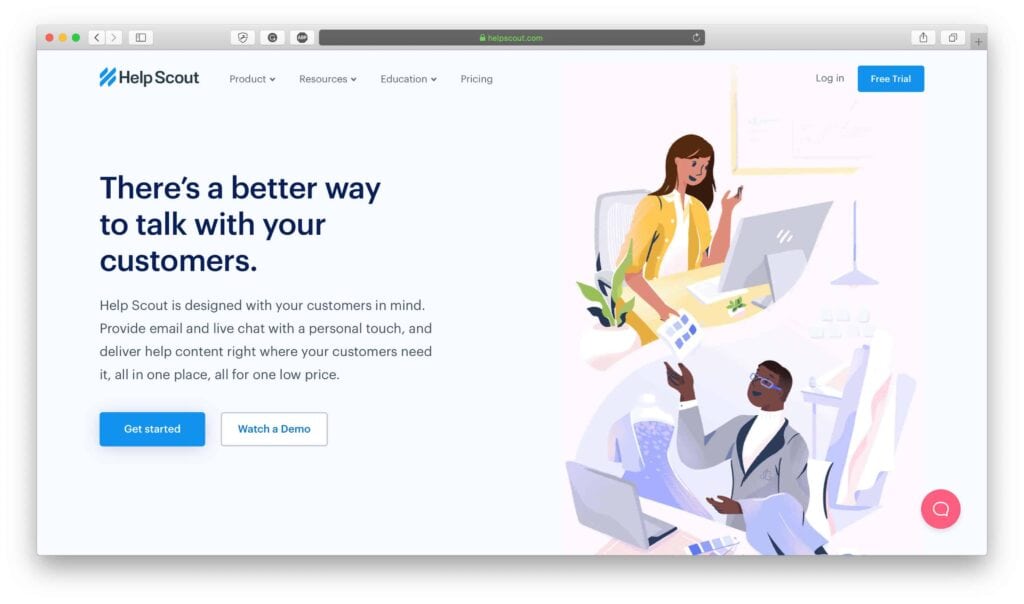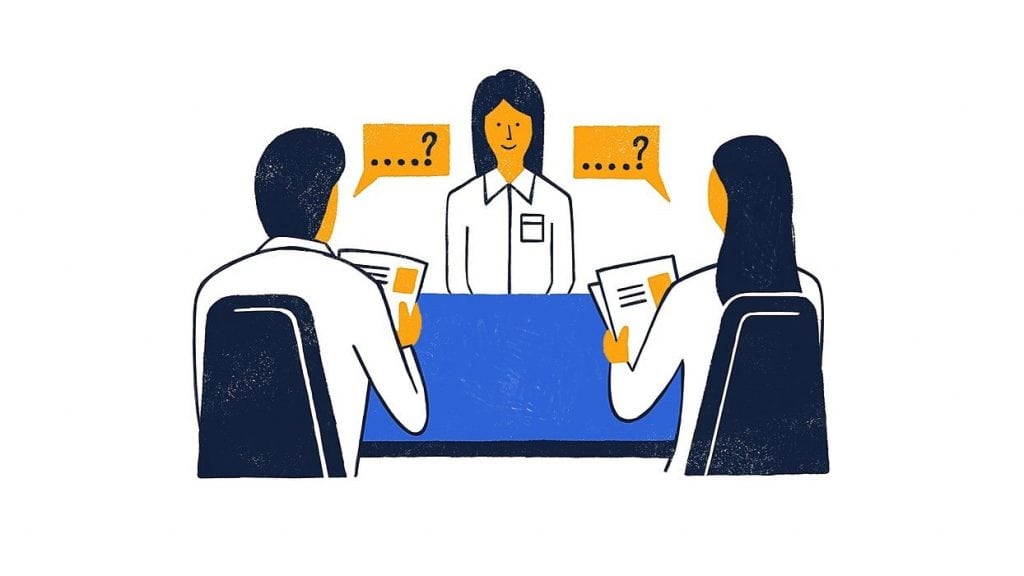Custom Web Design: Crafting Unique Online Experiences
The internet can seem like an endless sea of sameness at times. Generic templates abound, and it's easy for websites to blend in a homogeneous mush. But your business is unique. Your brand has a distinct identity. Your website should reflect that – not dissolve into the digital wallpaper.
This is where custom web design comes in. Unlike cookie-cutter templates and DIY sites, custom design allows you to create a web presence as singular as your company's DNA. Your site can become an extension of your brand, weaving visuals, content and functionality into an immersive experience for visitors. But achieving this requires both artistry and strategy.
Table of Contents
Defining Custom Web Design
Custom web design creates a unique and original website to meet a business's needs and goals. This differs from template-based sites, where you fill in the blanks of predetermined layouts and functions.
With custom design, web developers start from scratch and craft customised solutions, including:
- Unique page layouts
- Custom graphics and visual branding
- Tailored content and copywriting
- Personalised features and functionality
- Specialised UX design and interactions
- Custom code and development
The site is built around the client's brand identity, objectives and target audience. The goal is to produce a fully bespoke digital environment optimised for the client's requirements.
The Benefits of Custom-Designed Websites

Template sites may be quicker and cheaper, but there are profound advantages to investing in custom web design:
Distinct Branding & Identity
Custom design allows you to translate your unique brand identity into a visual experience online. This creates cohesion between your web presence and broader brand assets for a consistent customer experience across channels.
Optimised User Experience
Bespoke UX design means your site can be fine-tuned for your products, services and audience. Custom layouts, interactions and features combine to guide visitors seamlessly towards conversion goals.
Higher Conversion Rates
With custom sites converting over 200% better on average, the ROI speaks for itself. Tailored designs build trust and engage users, inspiring action.
Ownership & Control
You own a custom site outright. You're not bound to rigid templates or someone else's brand. You have complete creative control and can modify things as needed.
Search Engine Visibility
While no design automatically equals high rankings, custom touches can enhance SEO. Unique copy, metadata, URLs, site architecture and media optimisation all help search visibility.
Future-Proofing
Custom design allows flexibility to evolve the site over time. As needs change, the site can change without being locked into template restrictions.
The advantages make custom web design well worth the investment for many brands. However, excellent results require expert craftsmanship.
The Custom Web Design Process
Creating a custom website is an intricate process that requires careful planning, strategic design choices, and phased implementation. While every project is unique, the website design process generally follows these key steps:
Defining Goals and Requirements
The first stage focuses on establishing a firm project foundation. This involves identifying business goals, success metrics, target users, content needs and technical requirements. Project managers conduct competitor analysis to benchmark capabilities and identify differentiation opportunities. User experience testing and market research provide additional insights. The deliverables of this stage may include creative briefs, functional specifications and content strategy documents. Thorough requirements gathering prevents scope creep and positions the project for success.
Information Architecture and Sitemap Design
With goals defined, the information architecture takes shape. This involves structuring website content and functionality into a logical hierarchy. IA experts use techniques like card sorting to determine optimal categories, navigation and taxonomies. They design sitemaps and user flows to map the user journey across pages and tasks. Wireframes visualise page layouts and outline the placement of elements like headers, content modules and CTAs. Developing a vital IA establishes the underlying framework into which visual design and content get incorporated.
Visual Design and Branding
Next, the visual presentation and brand identity are established. Designers create style tiles, mockups and prototypes to showcase aesthetic directions, colour palettes, fonts, imagery and graphic styles. Brand guidelines shape the use of logos, icons and branding elements. Designers compose layouts and interface components that optimise page composition, visual hierarchy and responsive viewing on all devices. They may create custom illustrations, animations and multimedia assets to enrich the visual experience. The deliverables of this stage form the graphical blueprint for development to follow.
Content Creation and Optimisation
With graphical frameworks in place, the focus shifts to content creation. Writers develop custom text aligned with brand voice and SEO best practices. Photographers and videographers produce visual assets to populate page templates. All content gets structured for findability and scannability by segmenting text, optimising headings and highlighting important keywords. Media optimisation and performance tuning prepare visuals for fast loading. The goal is engaging, scannable content tailored to users’ needs and interests.
Development and Technology Integration
Now, the fully-designed site is transformed from concept to reality. Developers code page templates using HTML, CSS, JavaScript and other languages. Technical integrations connect the frontend to-backend databases, CMS, ecommerce platforms and APIs to enable dynamic functionality. Content gets uploaded into content management systems. Forms, analytics and app integrations get configured. SEO enhancements make content discoverable. Testing across environments and devices ensures browser compatibility and responsiveness. The result is an interactive, database-driven website ready for launch.
Quality Assurance and Iterative Refinement
After launch, the site enters an ongoing iterative improvement process. Site analytics and user testing reveal opportunities to enhance UI, optimise workflows and improve page speed. The design and development teams refine the site over time by updating content, adding new features and expanding into additional pages or sections. Continuous improvement and refinement ensure the custom website adapts to evolving business needs and user expectations.
The website design process blends strategy, creativity and technology into a phased, multidisciplinary effort. While every project follows a unique path, these steps provide a general roadmap for bringing a custom digital product from concept to rollout. A structured, collaborative process increases the likelihood of achieving business and user goals.
Selecting the Right Web Design Partner

In our digitally-driven world, a company's online presence is invaluable. The aesthetics and functionality of your website, apps, and other digital touchpoints can make or break your brand in the eyes of consumers. That's why choosing the right digital design partner is imperative.
When vetting agencies, look for these markers of excellence:
Strategic Acumen – Your partner should think like a business consultant, not just a creative firm. They need to deeply understand your brand vision, business goals, target audiences and competitive positioning to translate those into digital strategies that move the needle. Look for strategic thinking skills over order takers.
Innovative Design – Review portfolios showing original brand executions across the web, mobile and beyond. Cookie-cutter templates won't cut it these days. You want a partner who can craft experiences that are fresh, dynamic and cinematically engaging. Their work should tell a story and make an impression.
Technical Mastery – Custom designs need custom code. You want developers who can build robust, stable, scalable and secure digital ecosystems to spec. Seek advanced programming skills alongside visual artistry and user experience sensibilities.
Cultural Chemistry – A harmonious working relationship is essential. Ensure your work cultures, values, communication styles, and collaborative norms align. You want an extension of your team, not an outlier.
Proven Track Record – Validate capabilities by reviewing case studies and talking to past clients. Look for demonstrable ROI – more than just pretty interfaces. How have they moved metrics for other companies? What do their customers say?
When vetting potential partners, think of long-term value over short-term savings. Cutting corners on price or expertise will show in the end product. Excellence commands premium fees. View this as an investment, not an expense.
The right digital design partner can elevate your brand and drive business growth. Do your due diligence to find the perfect match. Prioritise strategic thinking, innovative creativity and technical expertise. With a stellar team behind your digital presence, the possibilities are endless.
Investing in Your Digital Landscape
Commissioning custom web design brings costs not found with templates. But it allows you to cultivate something more valuable for your brand – uniqueness. Your website will flourish as a thriving digital ecosystem tailored to your goals.
Treat the investment as a long-term asset. With expert care and iteration, your custom site will repay you many times over by:
- Attracting and engaging your ideal audience
- Building trust and brand loyalty
- Streamlining sales processes and user journeys
- Providing data to enhance decision-making
- Adapting seamlessly to evolving needs
In an increasingly commoditised digital landscape, custom design sets you apart. It may require more time, skill and money upfront. But the dividends over the lifespan of your website warrant the commitment.
So be bold. Give your online presence the custom craftsmanship it deserves. Don't settle for generic – cultivate something extraordinary and make your digital environment as unique as your business DNA. That's the artistry and immense upside of custom web design done right.
Frequently Asked Questions About Custom Web Design
How much does custom web design cost?
Custom design costs vary widely based on project size, features and other factors—budget at least $5,000+ for a quality small business site. Enterprise sites cost $100k and beyond. But focus on value over price – a bespoke site drives ROI long-term.
How long does a custom design take?
The typical timeline is 2-4 months but can vary significantly by scope. Maintain realistic expectations – quality customisation takes time. Plan well in advance of needing the site live.
Should I just use WordPress?
WordPress powers over 40% of sites but won't provide true customisation. It still relies on themes and plugins. While quick, it restricts branding, UX and functionality.
Can you show me an example of a custom web design?
Some examples of beautiful custom sites include Toast, Gymshark, Shopify, InVision, Slack, Stripe, and Squarespace. Their unique designs align perfectly with branding.
Why not use templates and DIY builders?
Templates limit brand expression and ownership. With DIY builders, you still own the site but lack designer expertise. Custom design is best for branding and UX sophistication.
